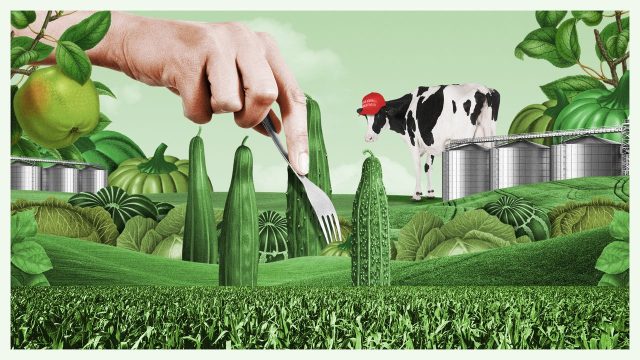
The Trump administration’s deportation raids earned a surprising new critic this month: the Trump administration. In a filing to the Federal Register submitted Oct. 2, the Department of Labor disclosed that the White House’s anti-migrant policies now threaten the “stability of domestic food production and prices for U.S consumers.” What’s more, the threat to America’s ability to grow and pick food domestically will only “grow” as Trump-led efforts to “enhance enforcement of the nation’s immigration laws are deployed.”
‘Structural, not cyclical, workforce crisis’
Contrary to Agriculture Secretary Brooke Rollins’ claim that the sector is moving “towards automation and 100% American participation,” the Labor Department’s filing suggests that American workers are “simply not interested in and do not have the skills to perform agricultural jobs” typically done by a now-shrinking pool of migrant farm laborers, said The American Prospect. There is no policy issue that “looms larger in agriculture” than the “acute, worsening shortage of workers on American farms,” the National Milk Producers Federation said in a press release. “Well-publicized” instances of “aggressive immigration enforcement, including on dairies, can’t help but raise concerns,” the group said.
The challenges facing the agricultural workforce are part of a “structural, not cyclical, workforce crisis,” The Department of Labor said in its filing, animated by a lack of legal farmworkers able and willing to move for work and the “ever-hastening loss of the mobile illegal alien workforce.” Should the Trump administration succeed with “even a fraction” of its multi-million person deportation agenda, it would not only result in “major disruptions across the food system” but could “upend” the rural economies that “depend on migrant workers and their families,” said The Guardian.
“Essential isn’t a strong enough word” to describe foreign-born laborers, said Kansas Livestock Association head Matt Teagarden to Politico. There is “some version of an immigrant,” even if “second or third generation, that are just critical to that work.”
Signs of ‘upwards price pressures’
In California, where a huge proportion of agricultural laborers are immigrants, the sector lost more than 150,000 workers between March and July after having grown during the same period the previous year. Although it’s “too early to draw firm conclusions,” the fact that food prices “rose by a similar rate” as the workforce shrank this year suggests the president’s immigration operations have resulted in “upwards price pressures” on certain foods, said the nonprofit American Immigration Council in an August press release.
Rising costs are at the center of the Labor Department’s recent filing, which focuses on bringing H-2A foreign workers legally into the country at reduced wages. H-2A workers are paid based on the Labor Department’s Adverse Effect Wage Rate, which “ignores differences between localities, detailed job types, skills and experience,” often resulting in higher pay than many state minimums, said Harvard Business Review. It’s unclear whether the Department genuinely believes the president’s immigration policies are a real threat to the agricultural workforce or is merely “pretending this threat is real” to drive down wages, said the Prospect. “Neither looks particularly good.”
The Department of Labor’s admission that immigration raids have affected America’s food supplies reopens a longstanding debate




